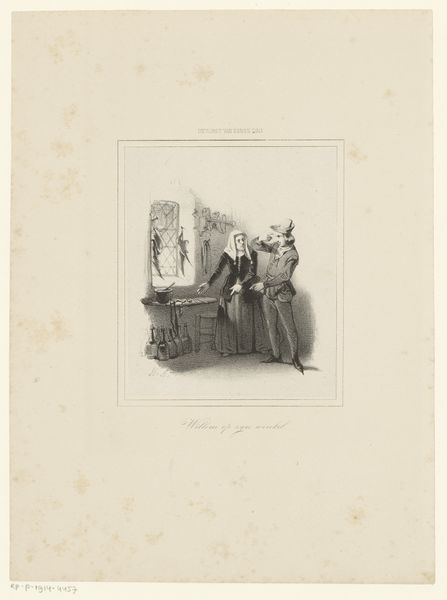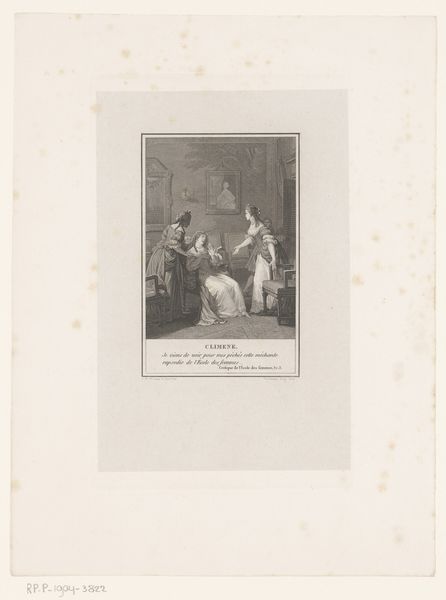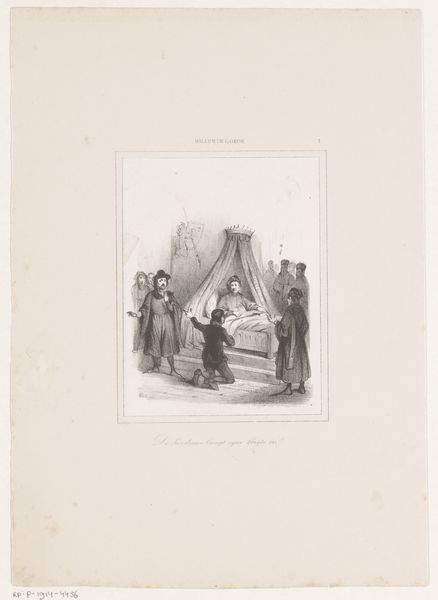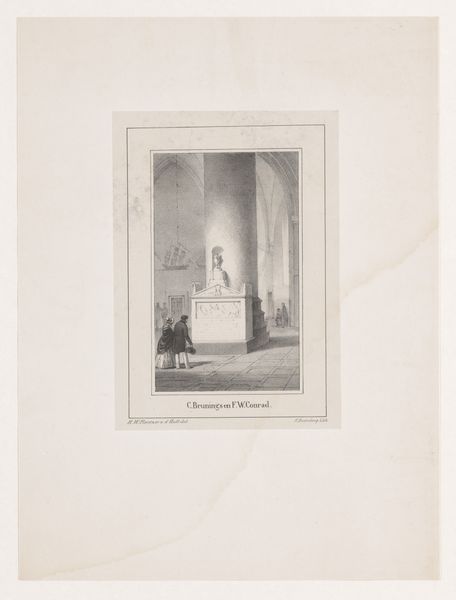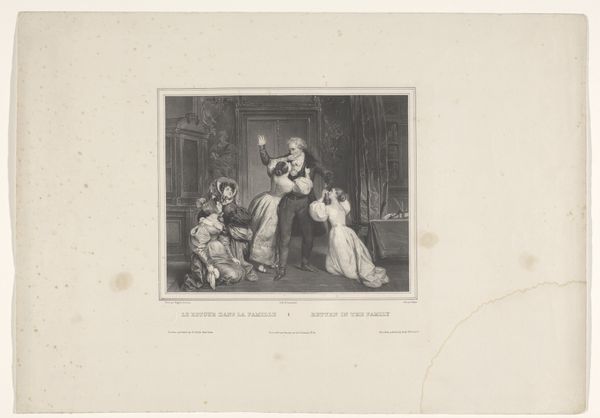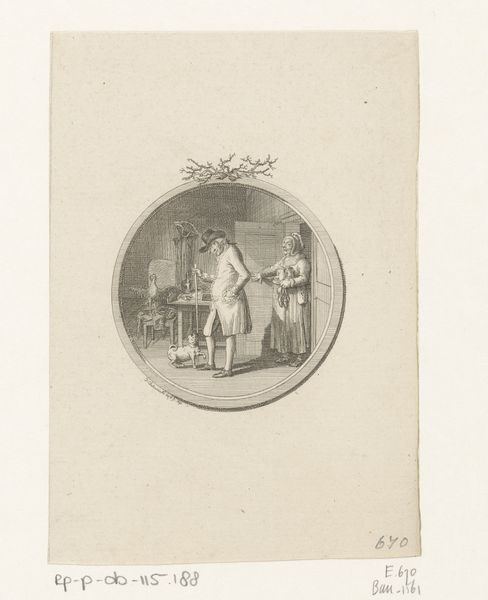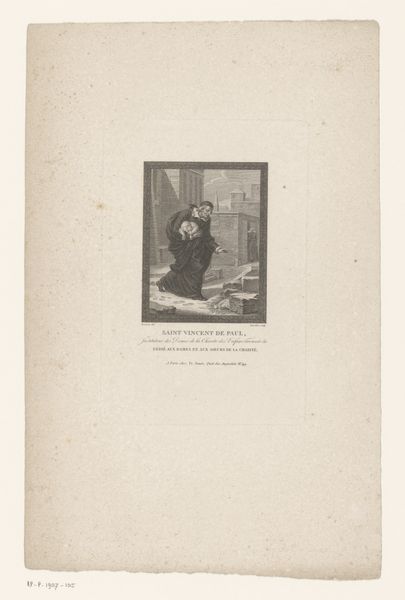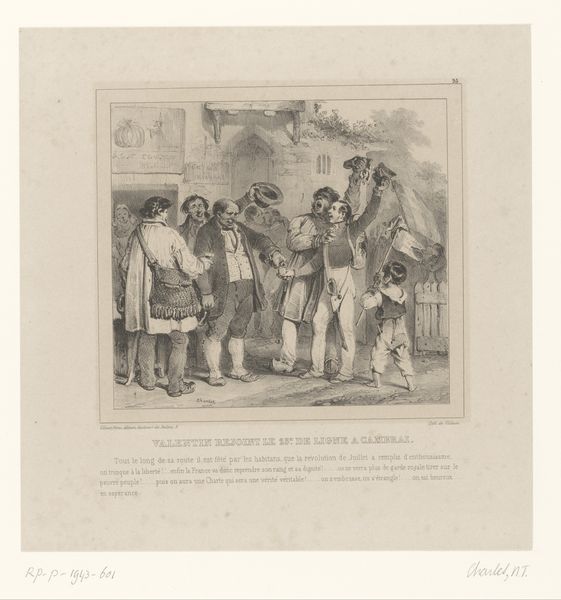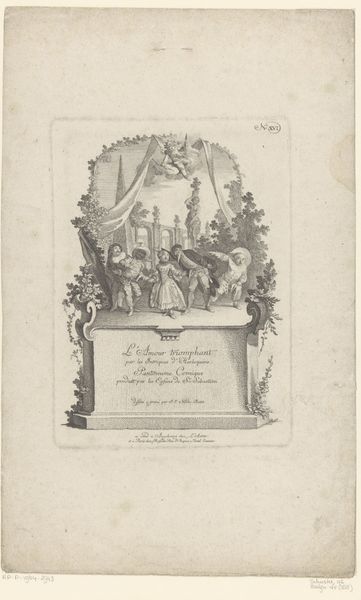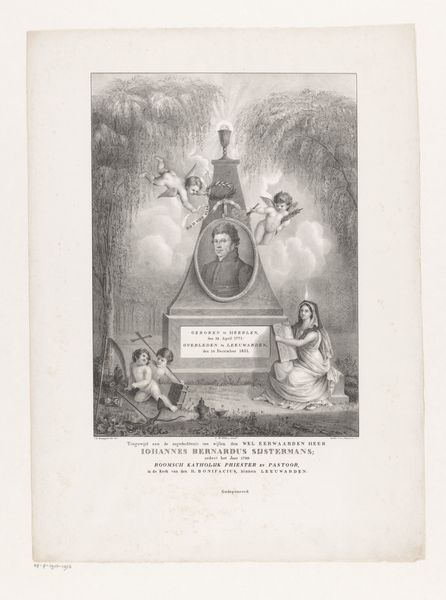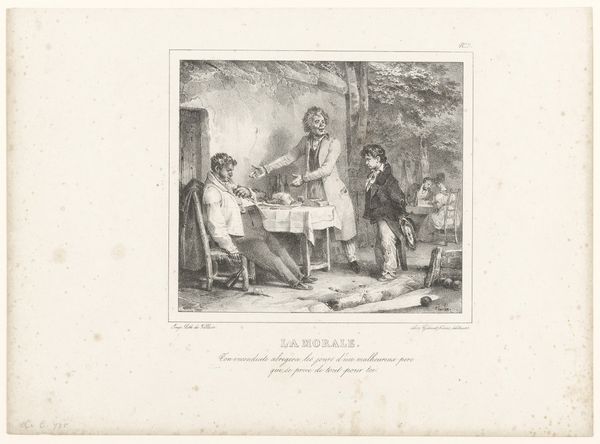
engraving
#
portrait
#
old engraving style
#
romanticism
#
line
#
history-painting
#
engraving
Dimensions: height 550 mm, width 470 mm
Copyright: Rijks Museum: Open Domain
Curator: This is a fascinating engraving from 1841: a portrait of Sibrandus Stratingh. What strikes you about it initially? Editor: It feels like a fever dream. I mean, the cherubs, the allegorical figure leaning pensively on a monument…It has a wistful, almost mournful atmosphere, even with all the neoclassical pomp. Curator: Right? Stratingh was a Dutch chemist and pharmacist, but you wouldn't necessarily glean that from the image. What we’re seeing is him almost floating amongst the clouds, supported by a backdrop of willow trees. Editor: Which have obvious symbolic weight – weeping willows are so closely tied with mourning and remembrance, the whole scene suggests Stratingh is being honored in memoriam. And let’s not forget the female figure; she embodies civic virtue but is posed as melancholic in grief. Are there connections between the deceased subject, his scientific pursuit and civic legacy, that may tell a richer story? Curator: Absolutely! The engraving places Stratingh in a very specific visual language that blends enlightenment ideals with Romantic sensibilities. He wasn’t simply a scientist, but a public servant whose work impacted the community. I interpret that as him earning that idealized eternal space within history. Editor: And notice the inscription on the monument! Commemoration and the creation of a legacy are powerful political acts. Who is doing the remembering and to what ends? Here it's about cementing Stratingh's contribution and place in the collective memory of his field and his nation. But, beyond that…I wonder how it resonated for queer people at the time? Given Stratingh’s role as one of the key proponents behind the Groningen Movement in the 1830s and its goal to introduce and disseminate "enlightened views," how might more queer readings allow to challenge societal expectations? Curator: That’s an incredibly interesting approach, I'll have to look further into it. For me, it always goes back to the willow trees; it suggests something deeper – a personal or even collective grieving that goes beyond simply acknowledging a contribution to science and into more ambiguous territory. Editor: Yes, so even while adhering to the conventions of memorial portraiture, it invites these wonderfully ambiguous readings.
Comments
No comments
Be the first to comment and join the conversation on the ultimate creative platform.
